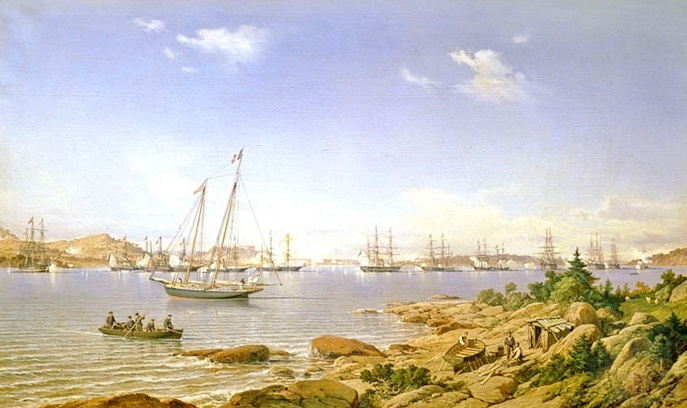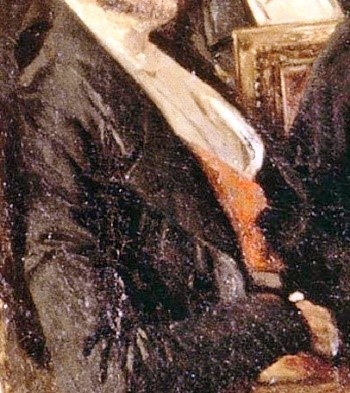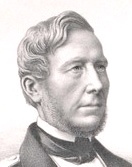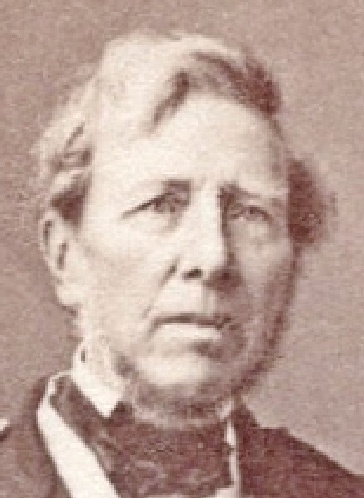Alexandre-Ferdinand Parseval-Deschênes (1790 – 1860), Admiral
First image: Soirée; 2nd: Cordon rouge; 3rd: Litho Cambart (1855); 4th: Photo Disderi (1859); (Alternative: Païva)
In this section of the painting, Admiral Alexandre Parseval is depicted conversing with Marshal Canrobert. Unlike the typical guests at de Nieuwerkerke’s vendredi-soirées, Parseval had little interest in forming friendships with conservators, artists, or composers.
His demanding naval career kept him occupied, and there are no known press records of his attendance at any soirée. If he was indeed present, it may have been related to his promotion from vice-admiral to admiral following his return from Bomarsund in late 1854. However, at that time, the vendredi-soirées had ended for the year. In that respect, Viscount de Païva may be more suitable.

Commanding over thirty warships from his formidable 90-cannon vessel, L’Inflexible, he played a crucial role in supporting the loosely coordinated French-English allied forces by successfully leading the destruction of the fortress of Bomarsund on the Åland Islands, situated between Sweden and Finland.
Despite his strategic success, the French Navy Admiralty managed to prevent Parseval from attacking the heavily fortified Russian naval base at Sveaborg, near Helsinki. The base was ultimately destroyed the following year and is now designated as a UNESCO World Heritage site.
Following his death in 1860, the French government honored his legacy by naming the next steam-powered battleship after him, ensuring that his contributions to naval warfare were commemorated for generations to come.



